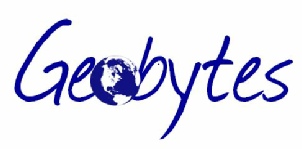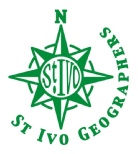


St Ivo Geography Department Online Portal
“Geography is the subject which holds the key to our future” -
Head of Department -


So what have you learnt? Using examples from Iceland at GCSE & A’Level
As well as all those amazing memories we hope you now have from your time in Iceland, you can also put lots of what you have learnt to good use in your GCSE exams next year (as well as at A’level for those of you who decide to take your study of Geography further after Year 11). During Year 11 we have been covering the physical geography unit of the AQA exam and you will be able to use lots of examples from what you have seen and learnt during your week in Iceland!
Using Iceland in your GCSE:
Coasts:
Major coastal erosion features
– Dyrohlaey – large arch created by coastal erosion
– Reynisdranger – basalt sea stacks (created as the headland has eroded back)
Rivers:
Gulfoss waterfall and also Skogafoss and Seljalandsfoss -
Tectonic Activity and Volcanoes:
– Iceland – located on the Mid-
– Thingvellir (Þingvellir) unique geology – Almannagja – canyon formed between the two tectonic plates which shows the effects of continental drift.
– Fissure at Bridge between two continents – further evidence of the divergence of the two plates.
– Surtsey – new island formed between 1963-
– Iceland frequently experiences volcanic eruptions and earthquakes – recent examples are Eyjafjallajökull in 2010, Bardarbunga in 2014 and Katla, a volcano under Mýrdalsjökull ice cap is due for a ‘big’ eruption – dramatic shrinkage in this particular ice cap over the last 30 years is believed be the result of recent volcanic episodes.
Living with / managing volcanic activity:
Example of managing volcanic activity – pouring sea water onto the lava flows of Eldfell back in 1973 – helped to slow the progress of the lava flow and saved the harbour at Heimaey.
Evacuation and management of the Eyjafallakojull eruption (example see in the video at the family farm of Þorvaldseyri) – also showed the challenges and hazards people face – e.g. ash and also the glacial outburst floods due to the meltwater from the glacier on top of Eyjafallajokull.
Frequent practice of what to do in the event of volcanic eruptions – e.g. 300 locals around the volcano Katla frequently practise an evacuation plan to take shelter in homes higher up the hill away from the ferocious flood waters which will occur when it erupts .
Benefits of living in Volcanic Environments:
Use of Geothermal Energy – 25% of Iceland’s electricity production comes from Geothermal energy and 66% of its total primary energy use is from geothermal. (Over 90% of homes in Iceland are heated by natural geothermal heat)
Meltwater created by sub-
Tourism – bringing in lots of money – e.g. Blue Lagoon, Visitor attractions such as Gulfoss, Geysir Centre etc. Tourism contributes over 5% to the countries GDP and exceeds 1,000,000 visitors a year. Nearly 12% of Iceland’s total workforce work in tourism-
Greenhouses in Iceland are heated with geothermal energy to grow their own fruits and vegetables (Iceland is the furthest place north of the equator that bananas are grown although many of these are now imported). During the shorter daylight houses, geothermal energy is used to power artificial light in the greenhouses.
For those of you that go on to study Geography at A’level:
Glaciation – Solheimajokull (the ‘Black Glacier’) – rapid retreat of glacier (and example of valley glacier – tributary from Myrdalsjokull
Rejuvenation / Fluvial Geomorphology – Skogafoss and Seljalandsfoss – both waterfalls formed by Isostatic readjustment
Braided Streams – in front of the glaciers formed by annual meltwater streams and also re-
Succession – The island of Surtsey – formed between 1963-
Minor Extrusive Volcanic Activity – great examples of minor extrusive igneous activity at the Krysuvik and Geysir areas with small scale extrusive features including geysirs & solfatara, hot springs and boiling mud puddles.